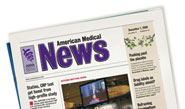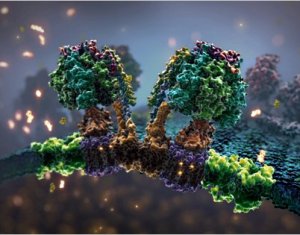November 27th, 2010 by GruntDoc in Better Health Network, News, Opinion
No Comments »

 Via the American Medical Associations’s American Medical News article “Welcome to our archives“:
Via the American Medical Associations’s American Medical News article “Welcome to our archives“:
Now, our extensive online archive, paired with search and article collections by topic, puts thousands of stories at your fingertips.
Add to that a growing collection of Web-only content, such as our interactive tool for tracking health-plan earnings and a “Vault” page that will take you directly to articles and multimedia on topics of enduring interest (www.amednews.com/vault).
Most of that older content has been behind an access-control wall. By knocking down that barrier, we are making available 10 years of full content and several years more of selected earlier articles. All told, about 15,000 articles now can be searched and read.
We invite our readers to visit the archives and link to our articles from their own sites, blogs and posts.
Thanks, AMedNews! I suppose an I told you so would be rude, so I won’t.
*This blog post was originally published at GruntDoc*
November 27th, 2010 by Berci in Better Health Network, Medical Art, News, Research
No Comments »

The New York Times published an article (with VIDEO) about molecular animators, scientists who can visualize the microscopic segments of life in a professional way:
If there is a Steven Spielberg of molecular animation, it is probably Drew Berry, a cell biologist who works for the Walter and Eliza Hall Institute of Medical Research in Melbourne, Australia. Mr. Berry’s work is revered for artistry and accuracy within the small community of molecular animators, and has also been shown in museums, including the Museum of Modern Art in New York and the Centre Pompidou in Paris. In 2008, his animations formed the backdrop for a night of music and science at the Guggenheim Museum called “Genes and Jazz.”
“Scientists have always done pictures to explain their ideas, but now we’re discovering the molecular world and able to express and show what it’s like down there,” Mr. Berry said. “Our understanding is just exploding.”

*This blog post was originally published at ScienceRoll*
November 27th, 2010 by DavidHarlow in Better Health Network, Health Policy, Health Tips, Medblogger Shout Outs, News
No Comments »

As patients, as family members, as friends, as health care providers, we have all faced end-of-life issues at one time or another, and we will face them again. And again.
This weekend the “Engage With Grace” message is being broadcast virally, through a “blog rally,” at a time when many people are with family and friends over the long weekend. The point is: We all need to have the potentially uncomfortable conversation with people close to us about what kind of treatment we would want, and they would want, if incapable of making or communicating healthcare decisions. CNN ran a story on “Engage With Grace” yesterday.
End-of-life decision-making has long been an issue of great personal and professional interest to me, and I am proud to have played a role in having out-of-hospital DNR orders recognized in Massachusetts by EMS providers, as an example. Read more »
*This blog post was originally published at HealthBlawg :: David Harlow's Health Care Law Blog*
November 26th, 2010 by RyanDuBosar in Better Health Network, Health Policy, News
No Comments »

Potential health effects of airport security are being questioned for their possible health consequences, from spreading germs to radiation exposure to the stress that being searched induces.
With cheaper flights available this year and the need for security in air travel, the Transportation Security Administration (TSA) is justifying its full body scans and its pat-downs that rise up travelers’ legs — all the way up.
The scanners use microwaves, leading some to question whether people may be receiving too much radiation. It’s also a concern to activists who may have already undergone a lot of radiation for existing condition, or who have other conditions for which TSA agents may not be trained. (Read one seasoned traveler’s personal experience here.) The TSA reports the scanners expose users less energy than a cell phone.
Some protesters refused the body scans in favor of a pat-down, in an effort to tie up air travel on the day before Thanksgiving and force a review on the issue. But a manual exam spreads germs, say others.
Amid all the speculation of potential health consequences, federal officials are reminding travelers that the security measures are there for passenger safety. However, retorts Jason Mustian‘s Twitter feed, “Body scans and genital fondlings would save more lives if our government was paying to have them done in hospitals rather than airports.”
*This blog post was originally published at ACP Internist*
November 26th, 2010 by Linda Burke-Galloway, M.D. in Better Health Network, Health Tips, News, Research
1 Comment »

Although the first trimester of pregnancy is sacred, there will be patients who will encounter problems at that time. During the first trimester, the brain and the central nervous system develops from 6 to 10 weeks, a time period commonly known as organogenesis. To minimize the risk of developing birth defects, medications and invasive procedures are usually postponed until the arrival of the second trimester.
A recent article in the October 2010 issue of Ob.Gyn. News reported some disturbing findings: Dental fillings in the first trimester were linked to the development of a cleft palate. A cleft palate is a birth defect that has a slit in the roof of the mouth because it failed to close during the first trimester.
The article by Susan London described a study in Norway where pregnant women had dental filings in the first trimester and their babies subsequently developed cleft palates. Ideally, dental problems should be addressed prior to becoming pregnant, however that is not always an option. Dental problems can occur during pregnancy because of the increased calcium requirements of the fetus as well as hormonal changes of the pregnancy. Read more »
*This blog post was originally published at Dr. Linda Burke-Galloway*
 Via the American Medical Associations’s American Medical News article “Welcome to our archives“:
Via the American Medical Associations’s American Medical News article “Welcome to our archives“:

















